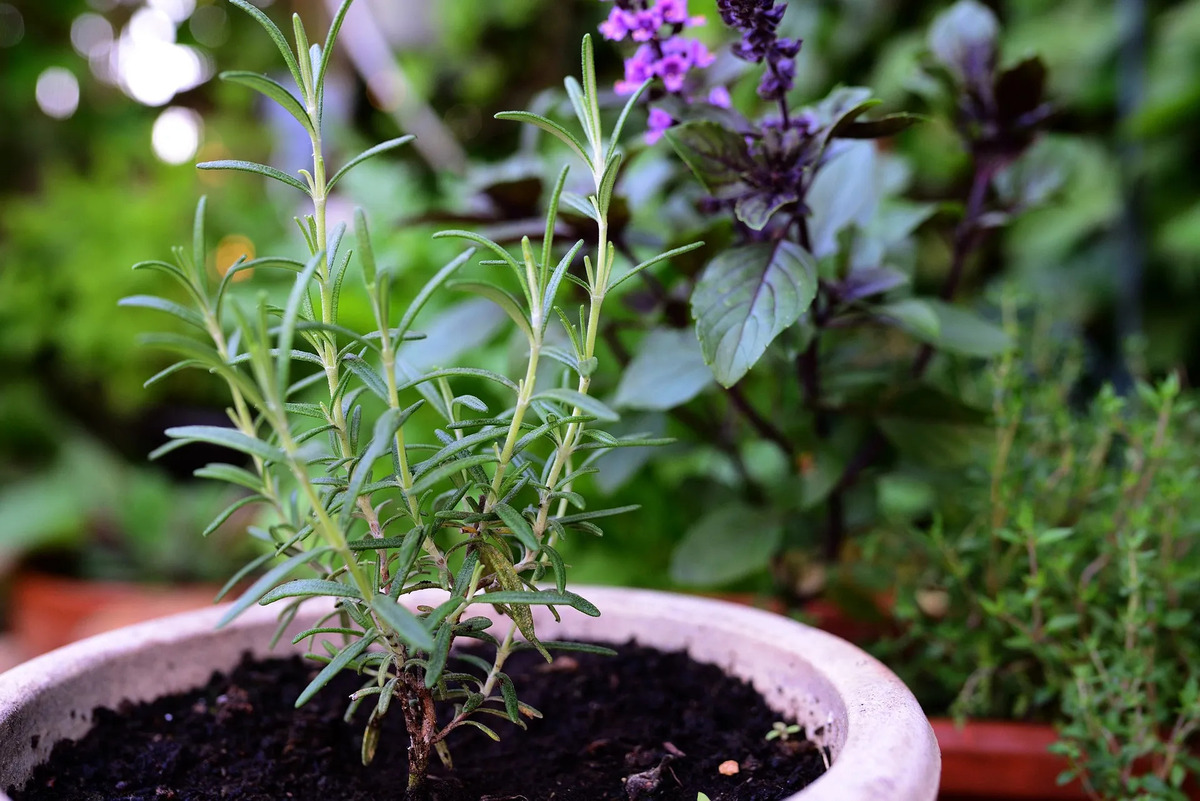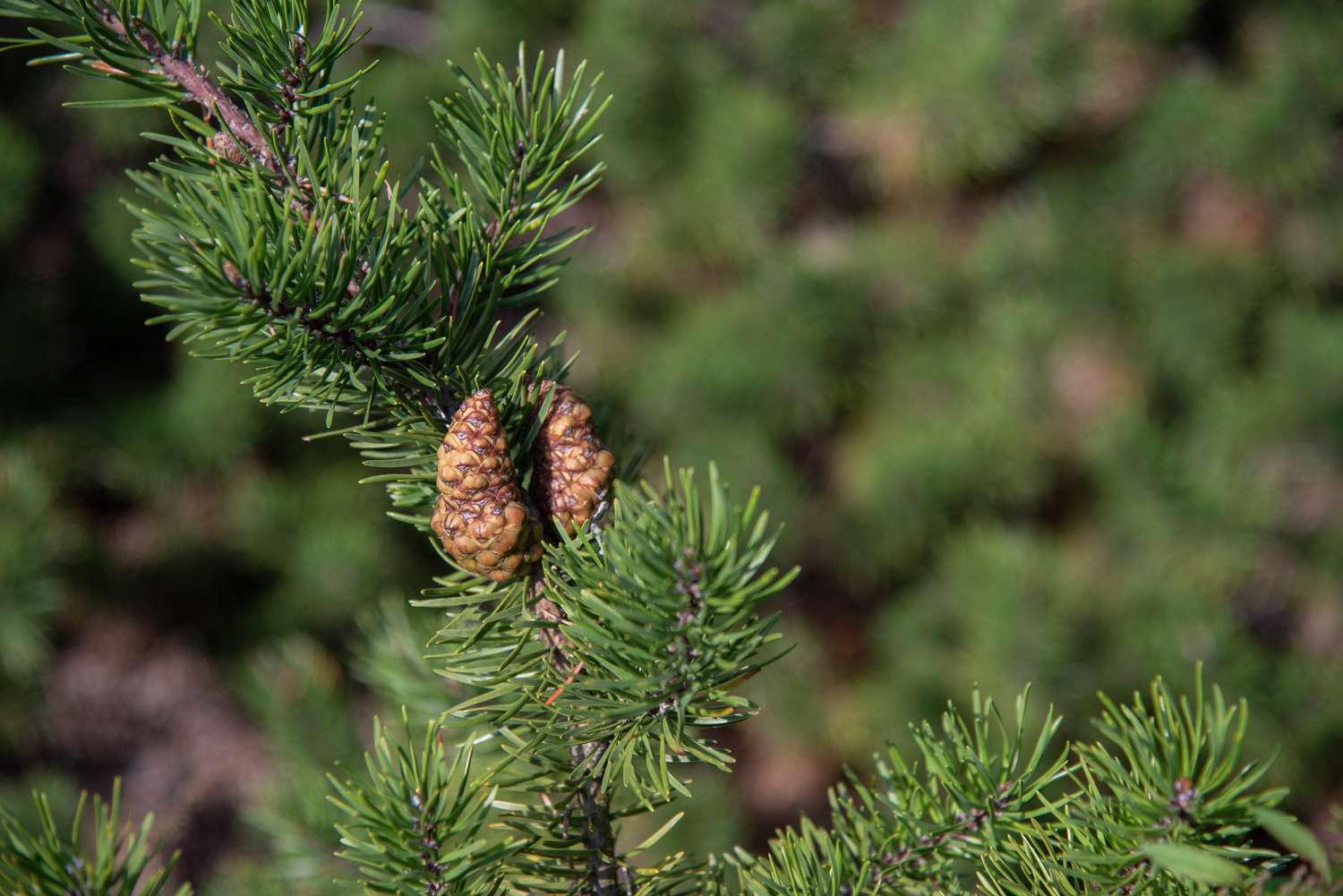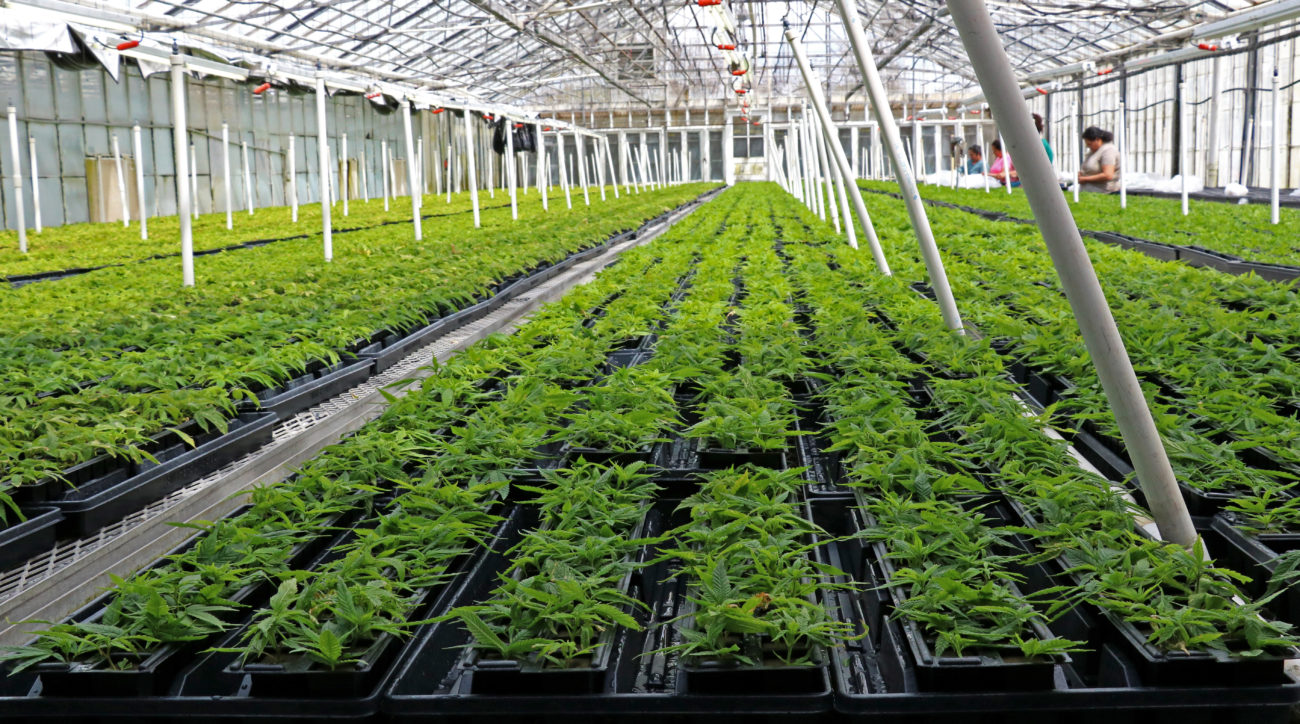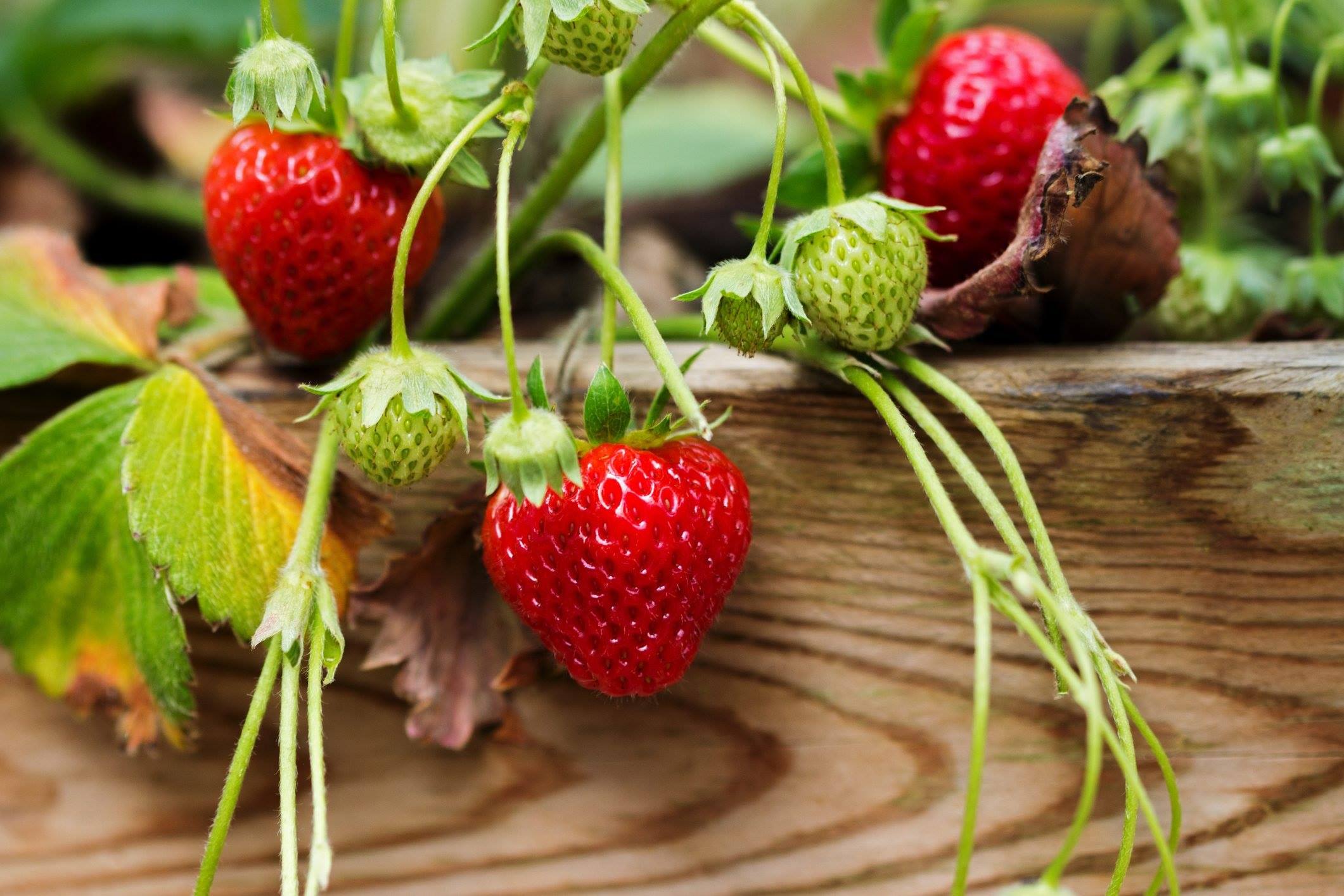Home>Types of Gardening>Edible Gardening>How To Grow Passion Fruit From Seeds


Edible Gardening
How To Grow Passion Fruit From Seeds
Modified: January 22, 2024
Learn how to grow delicious passion fruit from seeds with our step-by-step guide. Discover the secrets of successful edible gardening and enjoy a bountiful harvest!
(Many of the links in this article redirect to a specific reviewed product. Your purchase of these products through affiliate links helps to generate commission for Chicagolandgardening.com, at no extra cost. Learn more)
Table of Contents
Introduction
Growing your own edible garden can be a rewarding experience, and one fruit that is sure to add a tropical touch to your backyard is passion fruit. Known for its delicious and tangy flavor, passion fruit is not only a delectable treat but also a beautiful ornamental plant.
Whether you’re a seasoned gardener or a novice, this guide will take you through the process of growing passion fruit from seeds, allowing you to enjoy the fruits of your labor in no time. With a little patience, care, and a love for gardening, you can cultivate your own passion fruit vine and indulge in its scrumptious fruits.
Before we dive into the steps, it’s important to note that passion fruit thrives in warm climates, so if you live in a region with cold winters, you might need to consider growing passion fruit as an indoor plant or in a greenhouse. Now, let’s get started with the first step in growing passion fruit from seeds.
Step 1: Procuring Passion Fruit Seeds
The first step in growing passion fruit from seeds is to acquire high-quality seeds. You have a few options when it comes to procuring passion fruit seeds:
- Harvesting seeds from store-bought passion fruits: If you already have access to ripe passion fruits, you can save and use the seeds from these fruits. Simply scoop out the seeds, wash them thoroughly, and allow them to dry before moving on to the next step.
- Purchasing seeds from a reputable seed supplier: If you don’t have access to fresh passion fruits or want to ensure the quality and variety of your seeds, consider buying them from a reputable seed supplier or a local nursery specializing in edible plants. Look for seeds that are specifically labeled for the variety of passion fruit you wish to grow.
When selecting passion fruit seeds, opt for seeds that appear healthy, plump, and free from any signs of damage or disease. Fresh seeds have a higher chance of germination, so try to obtain seeds that have been recently harvested or purchased.
Remember, passion fruit plants are not true to type, which means the fruit from the seeds may have different characteristics than the parent plant. If you have a preferred variety, it’s best to purchase grafted passion fruit plants instead.
Step 2: Preparing the Soil
Once you have procured passion fruit seeds, the next step is to prepare the soil for planting. Passion fruit plants thrive in well-draining soil that is rich in organic matter. Here’s how to prepare the soil:
- Choose a suitable location: Passion fruit plants require full sun to thrive, so select a sunny spot in your garden. The soil should be slightly acidic to neutral, with a pH between 6 and 7.
- Clear the area: Remove any weeds, rocks, or debris from the planting area. Passion fruit vines prefer an unobstructed growing space.
- Amend the soil: If your soil is heavy or clayey, add organic matter such as compost, well-rotted manure, or peat moss to improve drainage and fertility. Work the organic matter into the top 12-18 inches of soil.
- Ensure proper drainage: Passion fruit plants do not tolerate waterlogged soil. If you have heavy or compacted soil, consider improving drainage by adding perlite, coarse sand, or vermiculite to the soil mix. This will help prevent water from pooling around the plant’s roots.
Before planting your passion fruit seeds, it’s important to wait until the soil has warmed up and there is no risk of frost. This will give your seeds the best chance of germinating and growing into healthy plants.
Now that you have prepared the soil, it’s time to move on to the next step: germinating the passion fruit seeds.
Step 3: Germinating the Seeds
Germinating passion fruit seeds is an essential step in the process of growing passion fruit plants. Here’s how to germinate your seeds successfully:
- Prepare the seeds: Before sowing the seeds, carefully nick or scarify the outer shell with a small knife or fine sandpaper. This will help improve water absorption and enhance germination rate.
- Soak the seeds: Place the scarified seeds in a container and cover them with warm water. Allow them to soak for 24 hours. This soaking process softens the tough seed coat and promotes germination.
- Choose a germination method: There are two common methods for germinating passion fruit seeds: the paper towel method and direct planting.
- Paper towel method: Take a damp paper towel, place the soaked seeds on it, and fold the towel to cover the seeds. Keep the towel moist and place it in a sealed plastic bag or container. Store it in a warm location, such as on top of a refrigerator or near a heat source, but out of direct sunlight. Check the seeds regularly for signs of sprouting.
- Direct planting: Alternatively, you can plant the soaked seeds directly into small pots filled with moist, well-draining soil. Plant the seeds ½ inch deep, cover them with soil, and gently water the pots.
- Provide optimal conditions: Whichever method you choose, the germination process requires consistent warmth and moisture. Aim for a temperature range of 70-85°F (21-29°C). Keep the paper towel or soil evenly moist, but not waterlogged.
- Wait for germination: Passion fruit seeds can take anywhere from 2 to 8 weeks to germinate, so be patient. Once you start to see sprouts emerge from the seeds, it’s time to move on to the next step: transplanting the seedlings.
Germinating passion fruit seeds can be an exciting and rewarding experience. Seeing the first signs of sprouting is a glimpse into the future of your passion fruit vine and the delicious fruits it will produce. So, stay patient and continue with the next steps in the growing process!
Step 4: Transplanting the Seedlings
Once your passion fruit seedlings have sprouted and grown to a manageable size, it’s time to transplant them into their permanent location. Transplanting is a crucial step in the growing process, as it allows the seedlings to establish strong root systems and start thriving. Here’s how to transplant your passion fruit seedlings:
- Select a planting site: Choose a location in your garden that receives full sun and provides enough space for the passion fruit vine to grow and spread. Ensure that there is a sturdy support structure nearby, such as a trellis, fence, or pergola, as passion fruit vines are vigorous climbers.
- Prepare the soil: Before transplanting, prepare the soil in the planting hole by incorporating organic matter and ensuring good drainage, as mentioned in Step 2. This will provide a favorable environment for the seedling’s roots to establish.
- Gently remove the seedlings: Carefully loosen the soil around the seedlings and gently lift them out, taking care to avoid damaging the delicate roots. If the seedlings are growing close together, separate them by carefully teasing the roots apart.
- Plant the seedlings: Dig a hole in the prepared soil that is slightly larger than the root ball of the seedling. Place the seedling in the hole and backfill with soil, firming it gently around the base of the plant. Ensure that the seedling is planted at the same depth it was growing previously.
- Water thoroughly: After transplanting, water the seedlings generously to settle the soil and eliminate any air pockets around the roots. Aim to keep the soil evenly moist but not waterlogged during the establishment period.
- Provide support: Immediately after transplanting, it’s important to provide support for the passion fruit vine to climb. Install a trellis or other support structure near the plant, ensuring that it is secure and sturdy enough to bear the weight of the vine as it grows.
- Maintain proper spacing: If you are planting multiple passion fruit plants, make sure to space them at least 10-15 feet apart to allow for adequate air circulation and prevent overcrowding.
Transplanting seedlings may seem daunting, but with gentle care and proper technique, your passion fruit plants will have a strong start in their new home. The next step is to provide them with the care and maintenance they need to thrive, which we will cover in the next section.
Step 5: Providing Proper Care and Maintenance
After transplanting your passion fruit seedlings, it’s important to provide them with the proper care and maintenance to ensure healthy growth and abundant fruit production. Here are some essential care tips for your passion fruit plants:
- Watering: Passion fruit plants require regular watering to thrive. Keep the soil consistently moist, particularly during dry periods. However, avoid overwatering, as waterlogged soil can lead to root rot. Aim to water deeply once or twice a week, allowing the top few inches of soil to dry out between waterings.
- Fertilizing: Passion fruit plants benefit from regular feeding. Apply a balanced fertilizer, such as a 10-10-10 or 14-14-14 formula, every 6-8 weeks during the growing season. Follow the manufacturer’s instructions for application rates and methods. Organic fertilizers, such as compost or well-rotted manure, can also be used to nourish the plants.
- Pruning: Pruning is essential for maintaining the health and shape of your passion fruit vine. Remove any dead, damaged, or diseased branches regularly. Additionally, prune to control the size of the plant and promote better air circulation. Pruning is typically done in late winter or early spring before the vigorous growth period begins.
- Support and Training: As your passion fruit vine grows, train it to climb the support structure you provided during transplanting. Gently guide the tendrils and new growth, ensuring they are securely attached to the trellis or other support system. Prune any excessive growth that veers off course or becomes overcrowded.
- Pest and Disease Control: Monitor your passion fruit plants regularly for signs of pests such as aphids, mealybugs, or whiteflies. If you spot any infestations, treat them promptly with organic or chemical insecticides. Additionally, watch out for common diseases like fusarium wilt or root rot. Proper watering, good drainage, and maintaining a healthy growing environment are essential for disease prevention.
- Harvesting: Finally, your patience will be rewarded with the delicious bounty of passion fruit. Most passion fruit varieties take around 80-90 days to mature after flowering. The fruit is ready to be harvested when it turns from green to a vibrant purple, yellow, or red color, depending on the variety. Gently twist or cut the fruit from the vine and enjoy!
By providing the proper care and maintenance outlined above, you can ensure that your passion fruit plants are healthy, strong, and productive. Now that you have learned how to care for your passion fruit plants, it’s time to reap the fruits of your labor. Harvest and savor the delectable taste of homegrown passion fruits!
Step 6: Harvesting the Passion Fruits
After months of nurturing your passion fruit plants, the time has finally come to reap the rewards of your hard work. Harvesting passion fruits at the right time ensures optimal flavor and sweetness. Here’s how to harvest passion fruits:
- Check for ripeness: Passion fruits are ready to harvest when they have reached their mature color. Depending on the variety, this can range from purple to yellow or red. The skin should be slightly wrinkled, indicating that the fruit is fully ripe.
- Twist or cut the fruit: To harvest the passion fruits, grasp them gently and give them a slight twist. If they come off the vine easily, they are ready to be picked. Alternatively, you can use a pair of clean garden shears to snip the fruits from the vine.
- Handle with care: Passion fruits have delicate skins, so handle them with care to avoid bruising or damaging the fruit. Place them in a shallow container or basket, taking care not to stack them on top of each other.
- Store or consume: If you plan to store the passion fruits, place them in a cool, dry place away from direct sunlight. They can last for up to two weeks at room temperature or even longer when refrigerated. If you prefer to enjoy them fresh, simply cut the fruit in half and scoop out the pulp, which is sweet and tangy.
Harvesting passion fruits as they ripen will give you a steady supply of delicious fruits throughout the season. Remember, the more you harvest, the more fruits your plant will produce. So, keep an eye on your passion fruit vine and enjoy the bountiful harvest!
Conclusion
Growing passion fruit from seeds can be a rewarding and fulfilling experience. With proper care and attention, you can cultivate your own passion fruit vine and enjoy the delicious fruits it produces. From procuring high-quality seeds to providing optimal soil conditions, germinating the seeds, transplanting seedlings, and providing ongoing care, each step is essential for the successful growth of your passion fruit plants.
Remember to choose a sunny spot in your garden, prepare the soil with organic matter, and ensure good drainage. Germinate the seeds using the paper towel or direct planting method, and provide them with warmth and moisture for successful germination. Transplant the seedlings into a well-prepared site, providing them with support and space to grow. Continue to care for your plants by watering, fertilizing, pruning, and monitoring for pests and diseases. Finally, harvest the ripe passion fruits and savor their delightful flavors.
By following these steps and nurturing your passion fruit plants with love and attention, you can enjoy the beauty and taste of tropical passion fruits right in your own backyard. So, roll up your sleeves, put on your gardening gloves, and embark on this delightful journey of growing your own passion fruit vine. Happy gardening!







